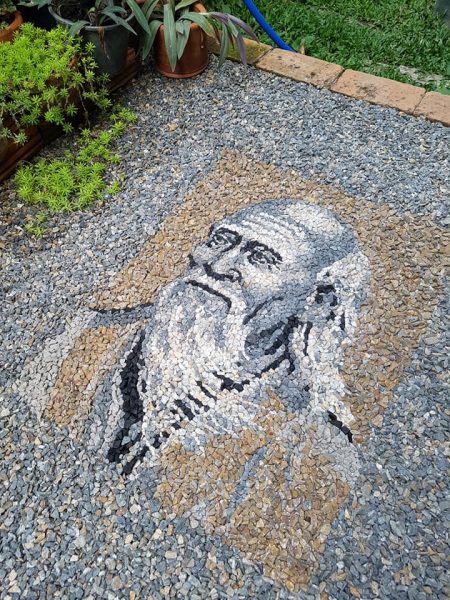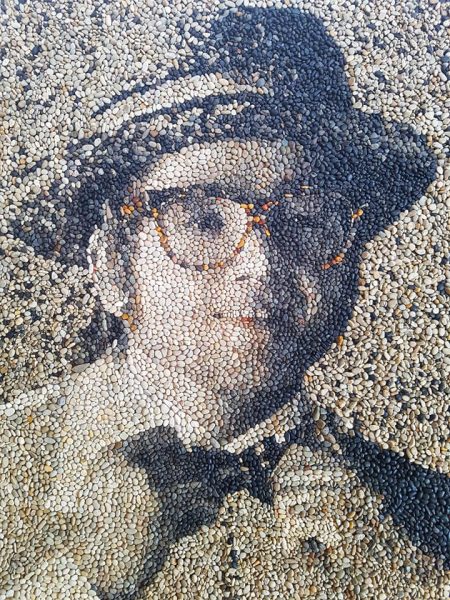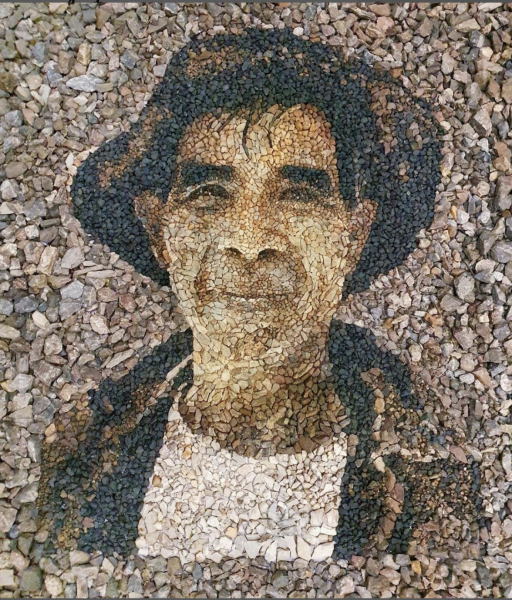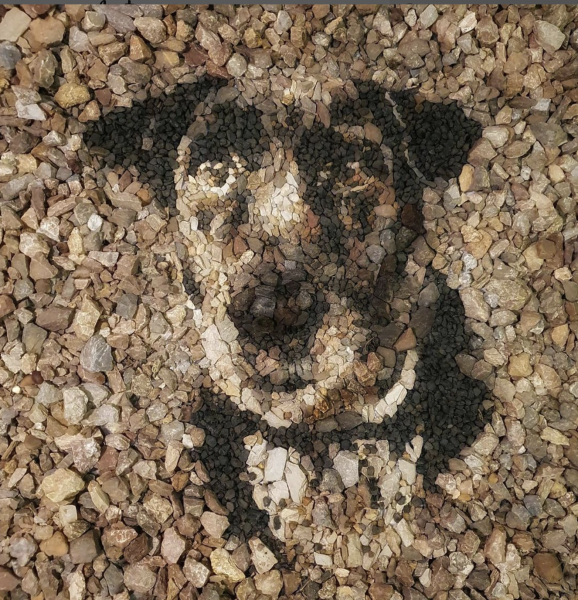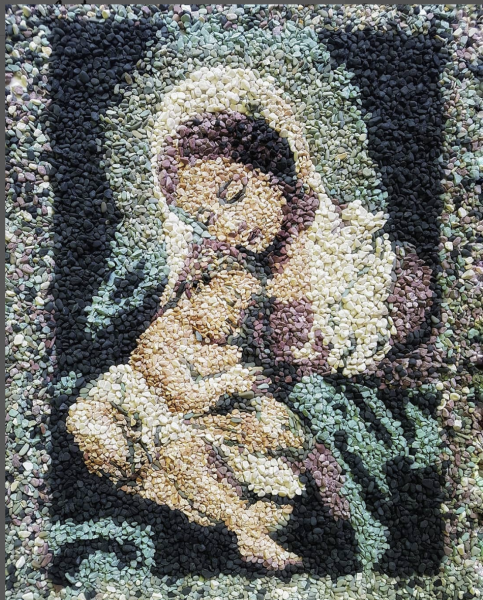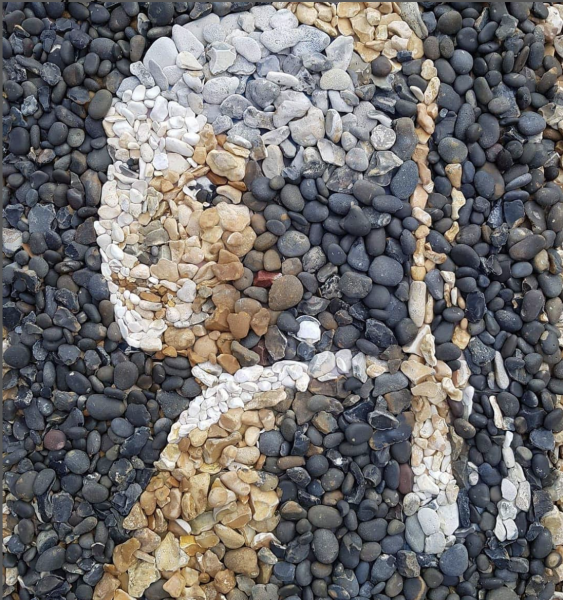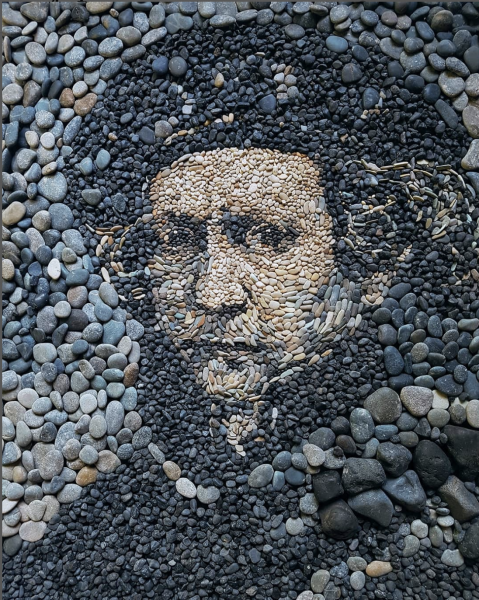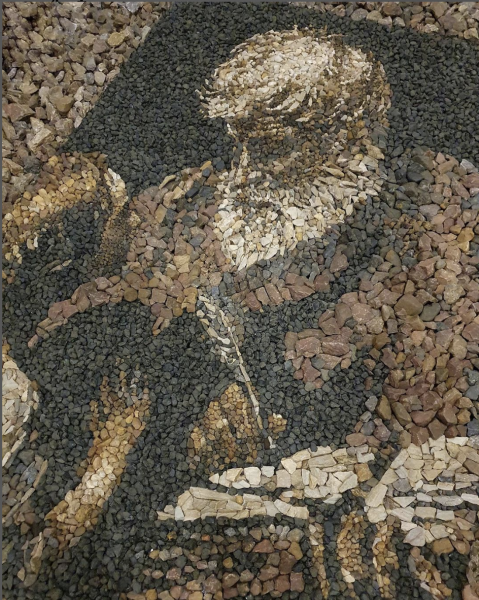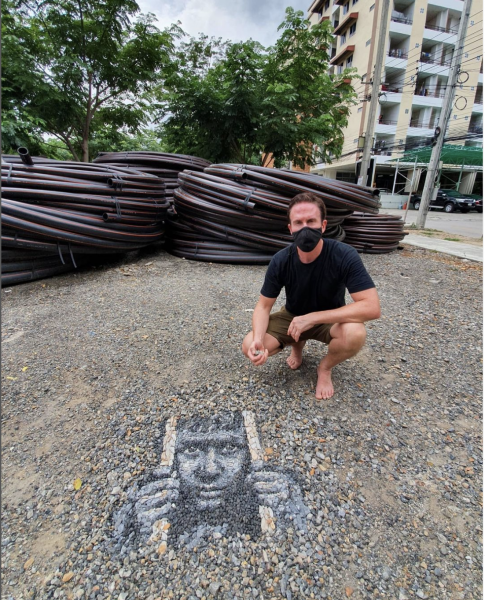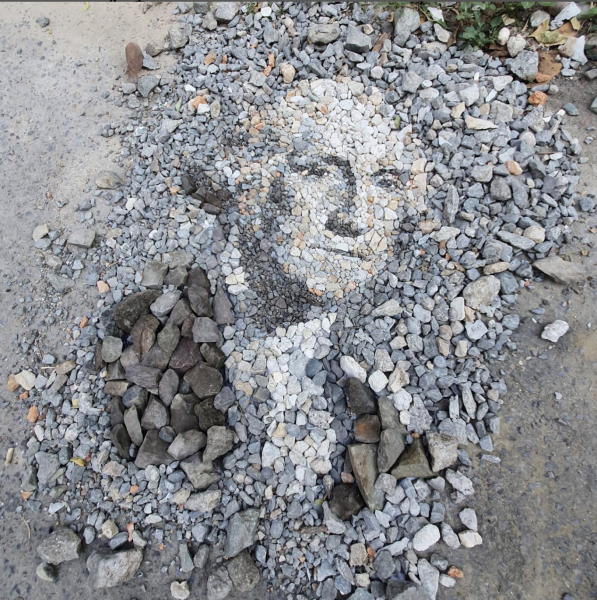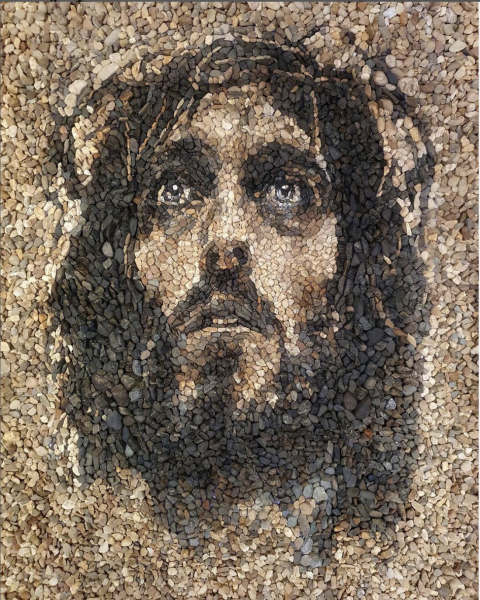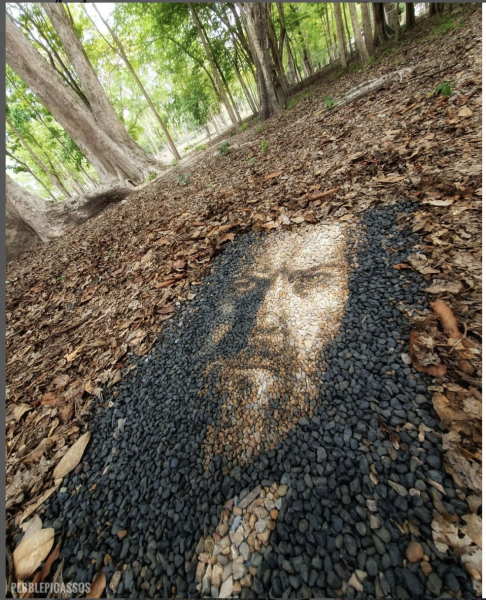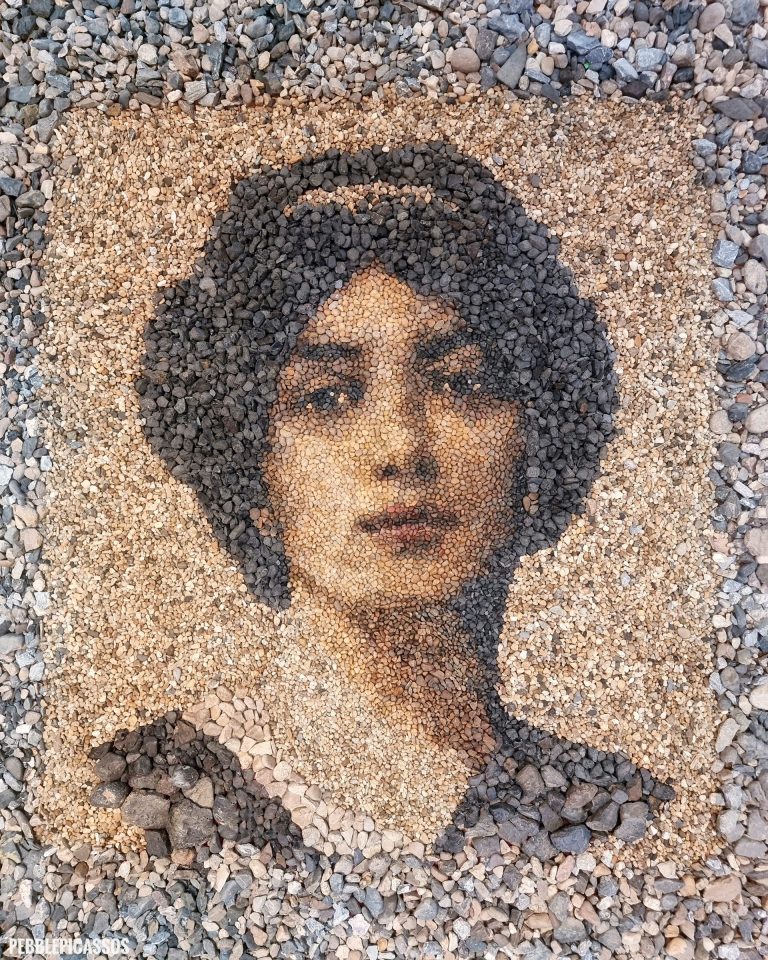“The most seductive thing about art is the personality of the artist himself,” said the infamous French artist Paul Cezanne.
Expressing his motto as ‘Pebbles are my pixels,’ the one-of-a-kind artist, Justin Bateman paints using pebbles of all colors, shapes, and tones. This UK-born artist utilizes natural settings as his canvas, inspired by esoteric Tibetan sand mandalas and their bodily impermanence. Currently located in Chiang Mai, Thailand, he thinks art should reflect our natural surroundings. Bateman’s worldview, like fleeting Tibetan mandalas, transcends everyday problems.
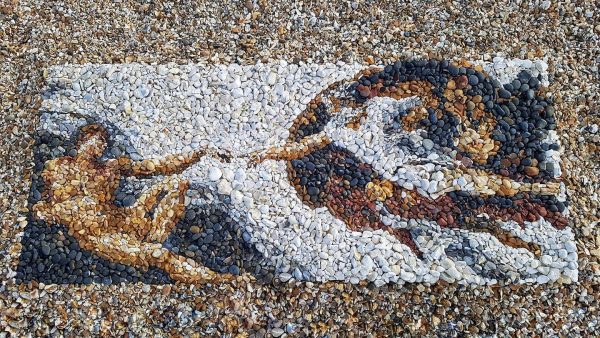
He gave a brief background about the type of painting he does. His paintings, similar to Mosaic practices, had been limited by rigid restrictions historically. Numerous random stones were replaced with materials carved into a cubical or regular form around 200 B.C. It is known as ‘tessera’ in mosaic techniques. Bateman states, “The most common material became marble, for its durability and gloss finish when polished. My work returns to a more ancient practice. I guess you could say it is the sculptural equivalent to cave painting!” He further said in Epoch Times, “Both suitable sites and stones must present themselves. If the subject, site, and stones do not align, the work is not made. If they do, then I begin by creating color maps of the subject.”

Initially, it started as a meditation for him as this 45-year-old artist was influenced by the land art sculptor, English artist Andy Goldsworthy and also the Canadian-American artist Philip Guston, who had challenged the concept of “high art.” This prompted Bateman to go to Thailand and Indonesia’s forests, jungles, and beaches to construct his brilliant, mosaic-like creations.
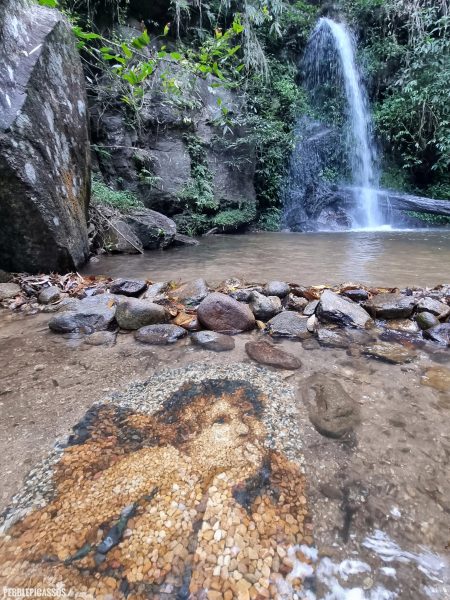
Bateman’s earthworks, like nature’s creations, are ephemeral. The work takes as little as three days or as long as 30 days to create a magnificently detailed replica. Until it is inevitably reclaimed by the earth, the open-air rural gallery will be free of walls for visitors to enjoy in awe and astonishment. Even though each mosaic will ultimately vanish, Bateman photographs his work for a digital memory. This is the only way most of us can appreciate his work’s remarkable intricacies.
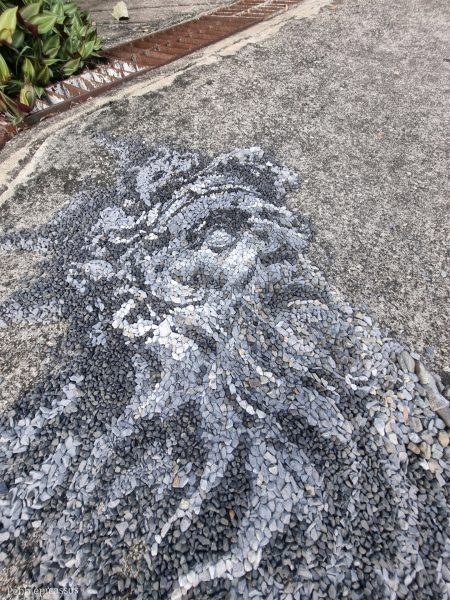
Success
You are now signed up for our newsletter
Success
Check your email to complete sign up
The subject matter for Bateman’s pebble portraiture originates from a feeling of natural human “curiosity” rather than a plainly constructed ideology. He said, “As the pebbles become pixels, there can be many surprises. Sometimes the stones can interlock in very satisfying ways, at other times it is like forcing a poorly made jigsaw together.”

Bateman also explains his creative process as, “There are so many unknown variables. I am only on the journey with the work, the outcome is as unknown to me as a spectator watching the process. I start with a test, making the eyes, if the eyes don’t work, the piece must be abandoned… The work must establish a soul.”
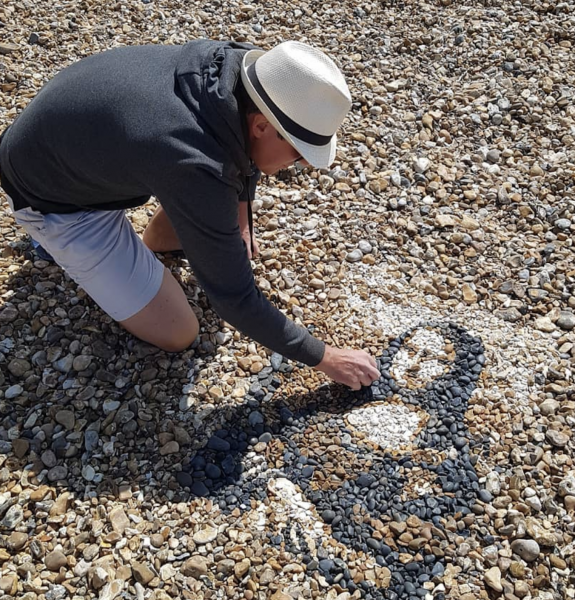
He often chooses for his stone art subjects like historical masterpieces, such as Michelangelo, Leonardo’s La Scapigliata, a Rembrandt self-portrait, a Raphael cherub, and Botticelli’s Birth of Venus—all of which demonstrate a cultural understanding of art.
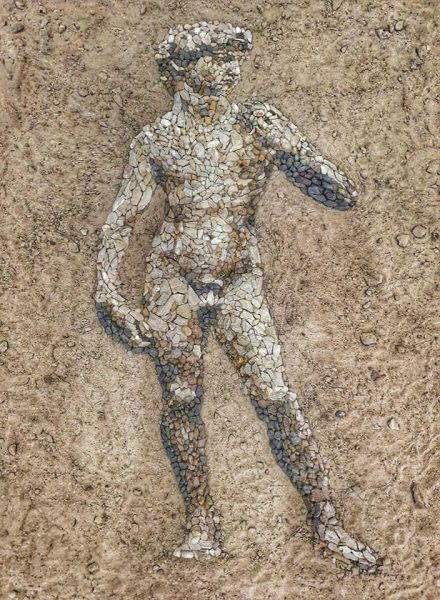
Bateman’s art examines a larger context by representing more contemporary personalities as well, including the late artist Pablo Picasso, Nelson Mandela, actor Robert Powell in the character of Jesus of Nazareth, Mark Zuckerberg, and a local Chiang Mai “Cattle Herder.” There are also other famous people like George Washington, Queen Elizabeth II, and Frida Kahlo.

He made a joke that instead of stressing about economics or world order, he would concentrate on finding a specific shade or tone of sepia, claiming, “It is, in some ways, a thoughtful practice, but it isn’t to suggest it isn’t fraught with problems!” He simply favors these topics over those that concern the rest of the world.
From the representation of Michelangelo’s David to Mark Zuckerberg, the work is stunning to witness and also breath-taking.
Bateman’s paintings are seldom meticulously planned. Instead, he allows the pebbles to determine the artwork’s layout. “Art should always be unrestricted, yet in its limits I find freedom. The beauty of this process is that I don’t have any idea how a piece will look at the outset.”
